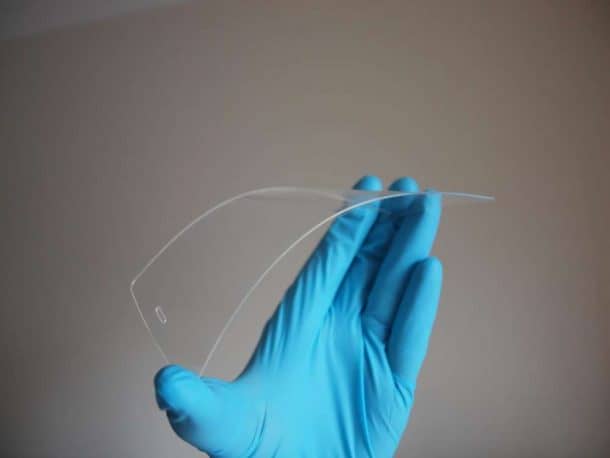We are all a little too familiar with the pain of a broken smartphone screen than we would have ever liked to be. Just because we have been through this painful endeavor does not mean that future generations have to suffer as well. A group of physicists at the University of Sussex may have just solved the problem by coming up with an unbreakable smartphone screen.
The primary component used in manufacturing phone touchscreens is indium tin oxide. The metal is rare and is used as a transparent, electrically conductive film on top of the screen. Even though it works, it does have a catch. The material is highly brittle as most of us have experienced firsthand. Its mining is an arduous process in itself which puts the workers themselves at risk and makes them prone to a number of health complications. Alternatively, silver can be used, but the costs cannot be justified for using such an expensive material.
To overcome this problem, scientists have combined silver nanowires with graphene to produce a hybrid material that could very well replace the touch screens on all phones. This hybrid material composed of silver nanowires and graphene is not only flexible but excels in performance as compared to the traditional touchscreens at a fraction of what they cost.
Professor Alan Dalton, leading the team from the school of Maths and Physical Science at the University of Sussex, says, “While silver nanowires have been used in touch screens before, no one has tried to combine them with graphene. What’s exciting about what we’re doing is the way we put the graphene layer down. We float the graphene particles on the surface of water, then pick them up with a rubber stamp, a bit like a potato stamp, and lay it on top of the silver nanowire film in whatever pattern we like.”

He also goes on to add that this technique is relatively easy to adopt on a large scale and it might not be long before these brittle screens are replaced by this new material. “And this breakthrough technique is inherently scalable. It would be relatively simple to combine silver nanowires and graphene in this way on a large scale using spraying machines and patterned rollers. This means that brittle mobile phone screens might soon be a thing of the past.”
Concern was raised that silver tarnishes in the air but the addition of graphene, which is a two-dimensional carbon material just one atom thick, protects it from the attack. This not only greatly reduces the cost of making a touch sensor, but it also enhances performance and reduces energy consumption. “The addition of graphene to the silver nanowire network also increases its ability to conduct electricity by around a factor of ten thousand. This means we can use a fraction of the amount of silver to get the same, or better, performance. As a result, screens will be more responsive and use less power.”


